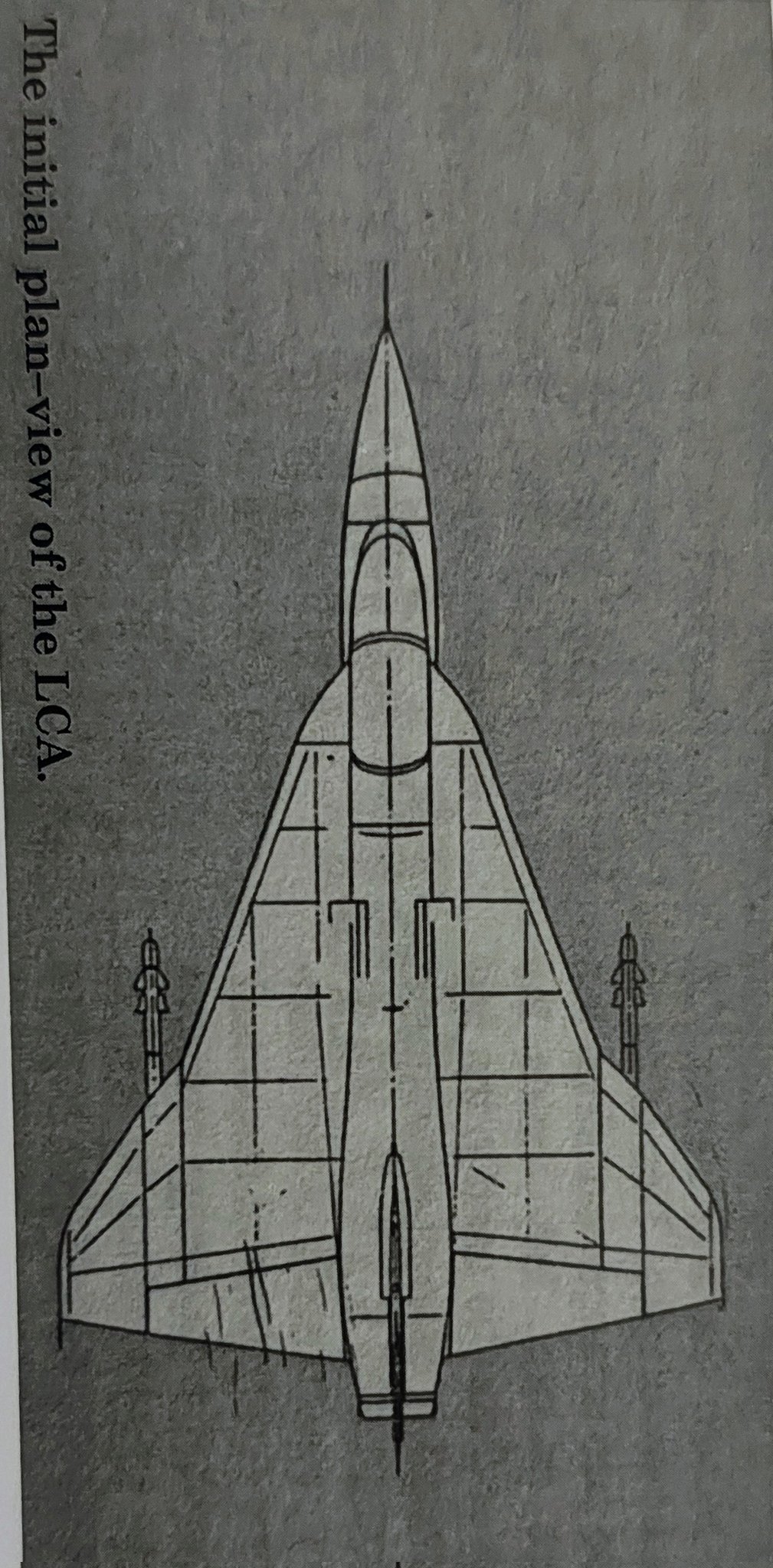SOURCE: AFI


A fascinating glimpse into the evolution of India’s indigenous Light Combat Aircraft (LCA) Tejas has emerged, courtesy of Review Vayu’s 50-year anniversary edition. An early concept design of the LCA, showcased in the publication, reveals a striking similarity to the General Dynamics F-16XL, an experimental variant of the F-16 developed by the United States in the 1980s. This conceptual plan-view drawing offers a window into the formative stages of India’s ambitious journey to build a homegrown fighter jet.
The LCA Tejas, developed by the Aeronautical Development Agency (ADA) in collaboration with Hindustan Aeronautics Limited (HAL), is a cornerstone of India’s quest for self-reliance in defence aviation. The early design, as depicted, features a cranked-arrow delta wing configuration, a hallmark of the F-16XL. The F-16XL, an experimental prototype, was designed to enhance the F-16’s range, payload, and aerodynamic performance, boasting a distinctive double-delta wing that improved lift and fuel efficiency. The resemblance in the LCA’s early concept suggests that Indian designers may have drawn inspiration from the F-16XL’s aerodynamic innovations during the program’s nascent stages in the 1980s.
This conceptual design highlights the LCA’s original intent to balance agility, lightweight construction, and multi-role capabilities—attributes that align with the F-16XL’s objectives. While the F-16XL never entered production, losing out to the F-15E Strike Eagle in a U.S. Air Force competition, its influence on global fighter jet designs is evident. For India, adapting such a configuration would have aimed to optimize the LCA for maneuverability and performance, critical for a light fighter meant to replace the aging MiG-21 fleet.
Over the decades, the LCA Tejas evolved significantly from this early concept. The final design incorporated a more refined delta wing, advanced fly-by-wire technology, and indigenous systems, culminating in a modern 4.5-generation fighter. Today, the Tejas serves as a mainstay of the Indian Air Force, with variants like the Tejas Mk-1A and plans for the more advanced Mk-2, showcasing India’s growing prowess in aerospace engineering.
The revelation of this early LCA design underscores the global exchange of ideas in aviation history, even as nations strive for indigenous innovation. It also serves as a testament to the iterative nature of aircraft development, where inspiration from international designs can spark the creation of a uniquely tailored solution. As India continues to advance its aerospace ambitions with projects like the Advanced Medium Combat Aircraft (AMCA), this early LCA concept is a reminder of the program’s humble yet visionary beginnings.
NOTE: AFI is a proud outsourced content creator partner of IDRW.ORG. All content created by AFI is the sole property of AFI and is protected by copyright. AFI takes copyright infringement seriously and will pursue all legal options available to protect its content.